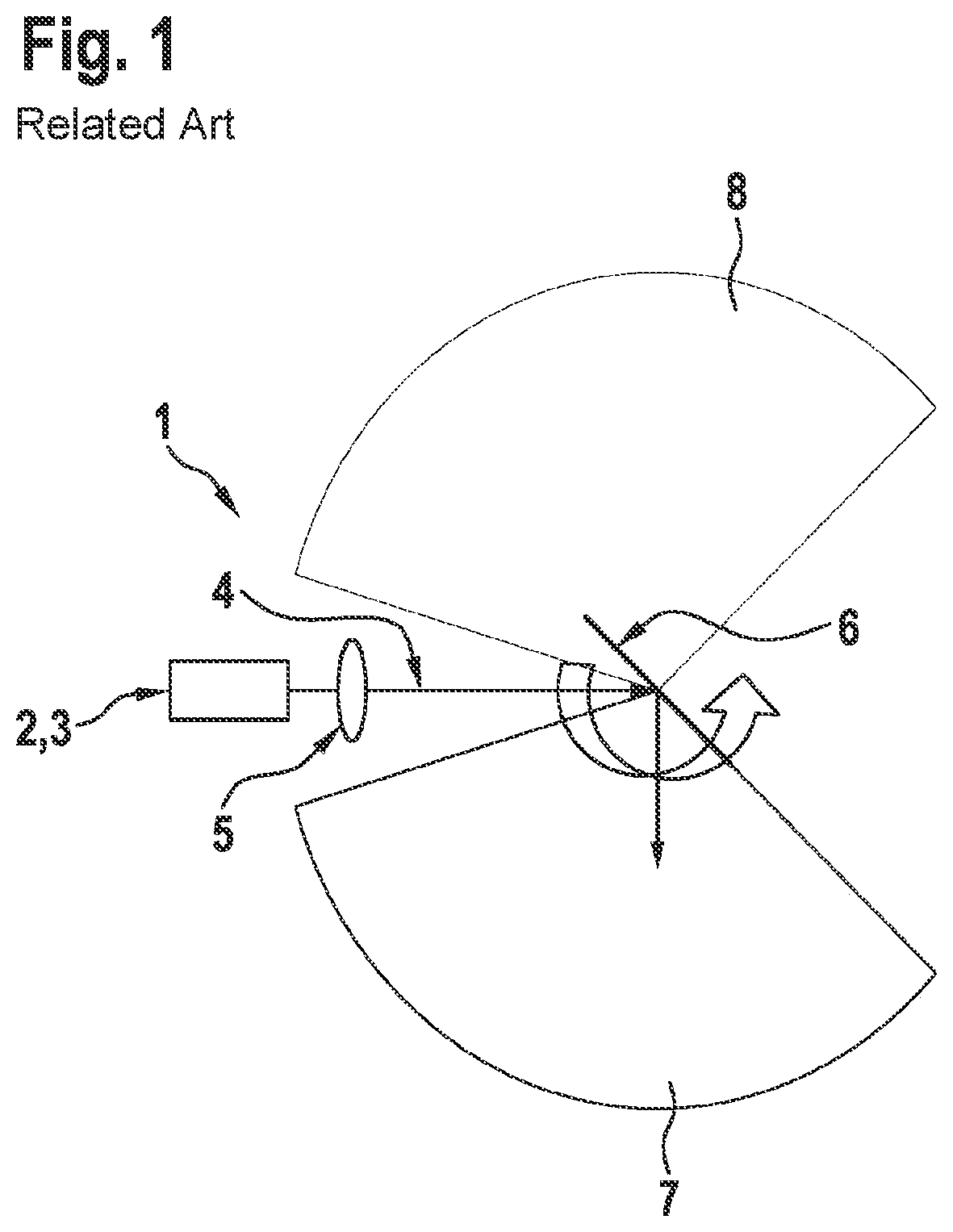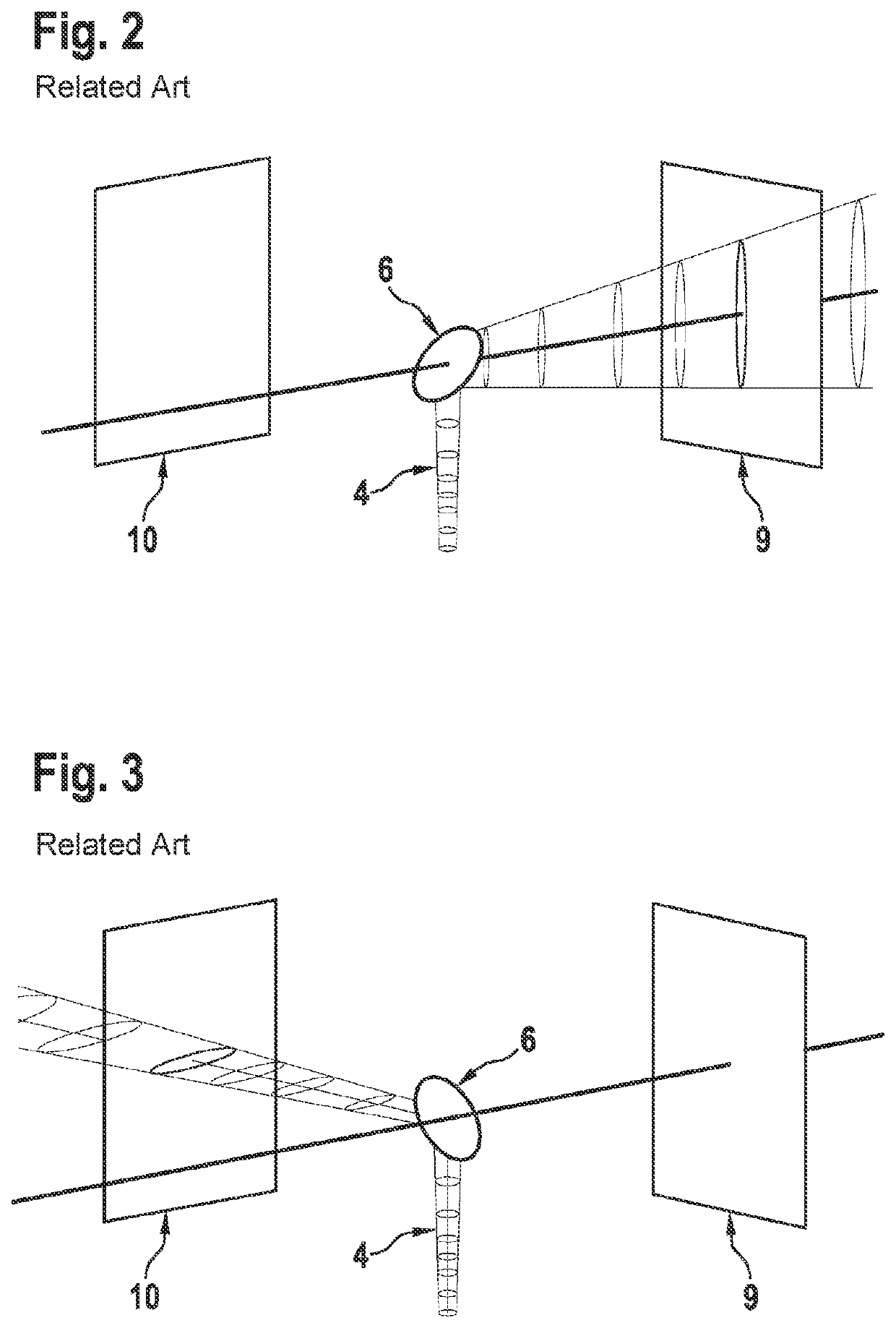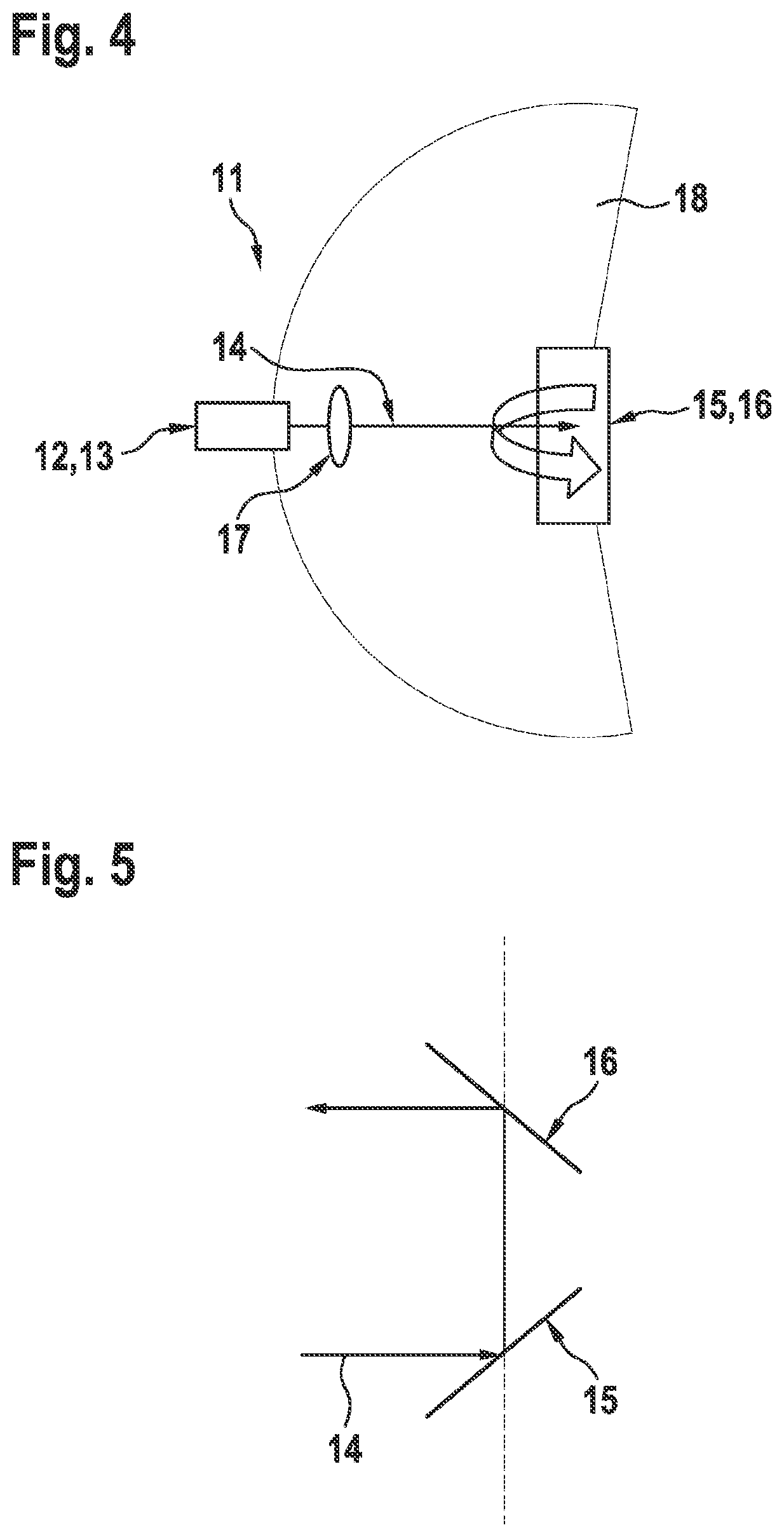Optical system, in particular lidar system, and vehicle
a lidar system and optical system technology, applied in the field of optical systems, can solve the problems of power supply and data transfer to the rotating element, the effect of reducing the effective transmission and detector surface area
- Summary
- Abstract
- Description
- Claims
- Application Information
AI Technical Summary
Benefits of technology
Problems solved by technology
Method used
Image
Examples
Embodiment Construction
[0035]FIG. 1 shows an optical system 1 of the related art, which includes an optical transmitter 2 and an optical detector 3 that are accommodated in a shared housing. Optical transmitter 2 is configured to emit a scanning light beam into the surroundings along a first beam path 4. An optical element 5 for beamforming is situated in the beam path. The scanning light beam subsequently strikes a mirror surface 6, which deflects the light beam in order to scan the surroundings. The optical system includes two separate FoVs of 140° each, for example, situated to the right and left of a blind spot about a deflection angle of 0°. For this reason, often only one of the two FoVs is used, which greatly limits the functionality of the optical system.
[0036]FIGS. 2 and 3 illustrate a further problem of the related art. Here, in comparison to FIG. 1, only beam path 4 and mirror surface 6 are illustrated for the sake of simplicity, as well as two screens 9, 10 that clarify the form of the scannin...
PUM
 Login to View More
Login to View More Abstract
Description
Claims
Application Information
 Login to View More
Login to View More - R&D
- Intellectual Property
- Life Sciences
- Materials
- Tech Scout
- Unparalleled Data Quality
- Higher Quality Content
- 60% Fewer Hallucinations
Browse by: Latest US Patents, China's latest patents, Technical Efficacy Thesaurus, Application Domain, Technology Topic, Popular Technical Reports.
© 2025 PatSnap. All rights reserved.Legal|Privacy policy|Modern Slavery Act Transparency Statement|Sitemap|About US| Contact US: help@patsnap.com



